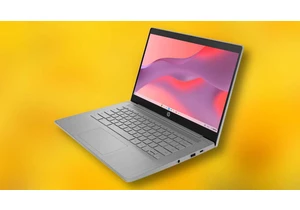Suddenly, Intel is a hot topic again — but this time as an investment property. As the company weathers layoffs and a struggling foundry business, both the U.S. government and SoftBank plan to invest. However, it’s not so simple.
Intel announced that SoftBank Group Corp., the Japanese investment giant, would put $2 billion at $23 per share into the struggling company, with the stated goal of investing in semiconductor manufacturing in the United States. That would give it about two percent of the company, as the Wall Street Journal noted.
The real question is what the United States government is pushing for, and if it will be allowed to: essentially convert the $10.9 billion previously earmarked for Intel as part of the U.S. Chips Act into equity. Though Bloomberg reported the proposed deal on Monday, Commerce Secretary Howard Lutnick confirmed the government’s intentions publicly on CNBC on Tuesday morning.
“We should get an equity stake for our money, so we’ll deliver the money which was already committed under the Biden administration,” Lutnick told CNBC, as quoted by NBC News. “We’ll get equity in return for it,” he added, and “get a good return for the American taxpayer.”
Bloomberg has stated that the government’s investment would equate to about a 10 percent equity stake in Intel, though this has not been confirmed. Intel has also not commented on whether it would agree to such a deal. It’s also unclear whether the company would have any say in the matter. The government does not have a sovereign wealth fund for investment, though a May Trump executive order tried to create one.
Intel lost $2.9 billion for the second quarter, with flat revenue of $12.9 billion, during which Intel chief executive Lip-Bu Tan said that Intel’s 18A process technology and its Panther Lake chips remained on track to roll out near the end of this year. On the other hand, Intel’s chief financial officer David Zinsner said that the process would “peak” by 2030 or so. Intel also raised the question of whether it would even remain in chip manufacturing, if it couldn’t find a high-volume customer for the next-gen 14A process technology.
Meanwhile, AMD continues to gain ground, quarter-over-quarter, especially in desktop CPUs. Intel still holds dominant shares in mobile and in the server space.
Login to add comment
Other posts in this group

As another year of school kicks off, you may be scrambling for a dece

Tired of your old, clunky, worn-out power strip? Wish it was faster,


There’s a new generation of browsers coming to shake up the market an

For better or worse, the number of ways to watch NFL and college foot

The USA may be considered the land of the free, but the reality is di

As one of the most important technology companies in the world, Micro
